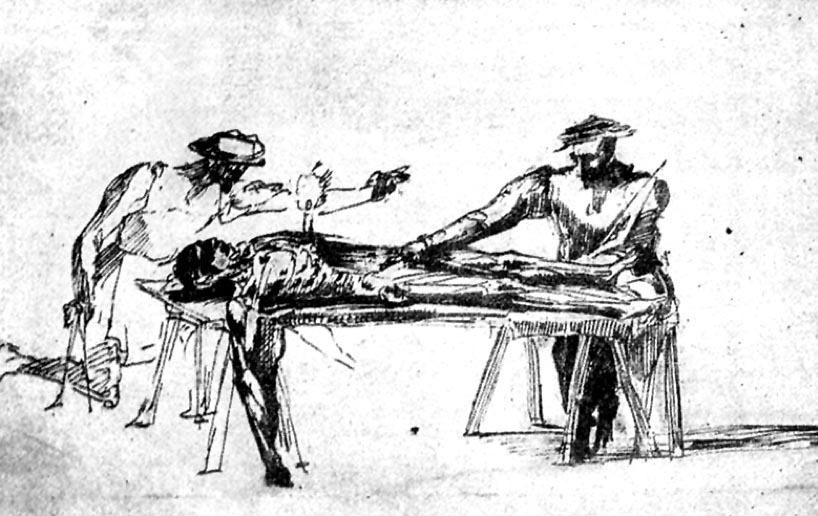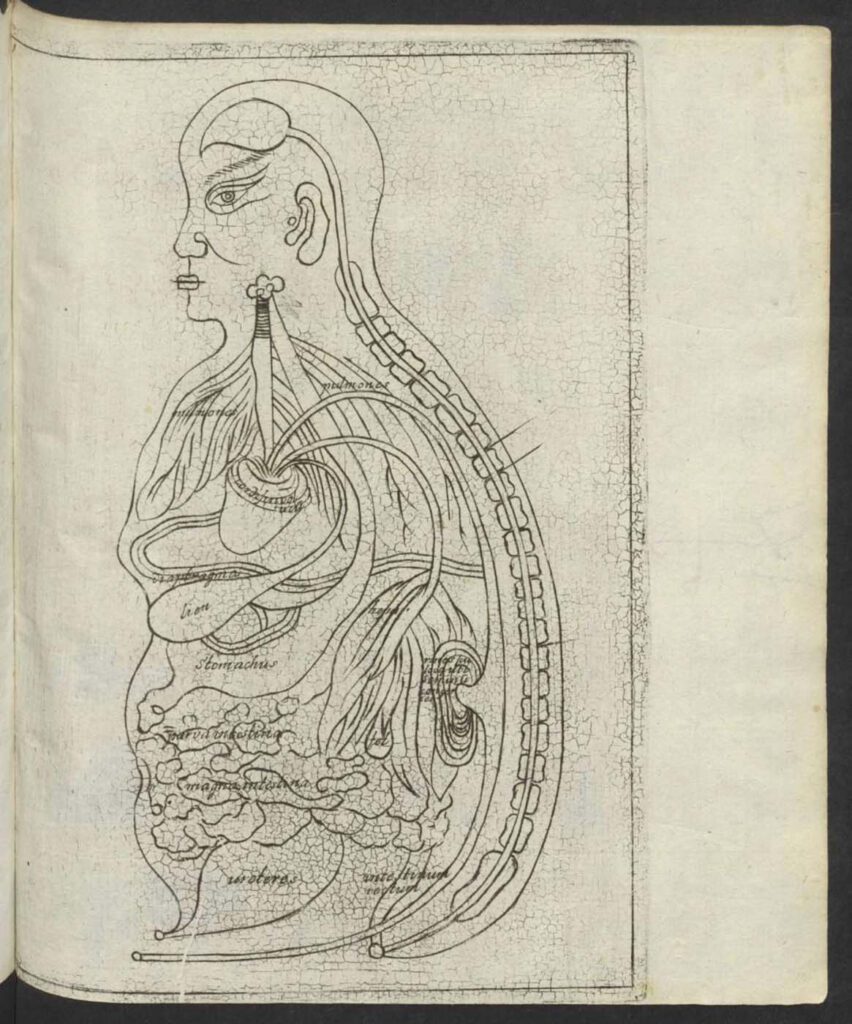The Gut / Der Darm

The Gut / Der Darm Anetta Mona Chisa & Lucia Tkacova public sculpture, Schillerplatz, Chemnitz (part of the project Gegenwarten | Presences), photographed by the artist – The Gut is the organ that renders Marx’s body in the city that holds the largest sculpture of Marx’s head in the world – Karl-Marx-Monument. The actual head […]
Henry Gray (anatomist) and Henry Vandyke Carter (artist), Fig. 1005, Superior and inferior duodenal fossæ.

Henry Gray (anatomist) and Henry Vandyke Carter (artist), Fig. 1005, Superior and inferior duodenal fossæ. Gray’s Anatomy Descriptive and Applied. A New American Edition (1913), p. 1265.Private collection: Nina Sellars. Photographer: Nina Sellars. – Giving thoughtful attention to the physical qualities of the classical anatomical atlases brings our awareness not only to their content and […]
Bernardino Capitelli, Anatomical Dissection, c. 1604 – 1639.

Anatomical Dissection, 1495-approximately 1543 Two men studying a corpse by the light of a candle stuck in itschest. Etching after a drawing attributed to Polidoro Caldara (Polidoro da Caravaggio). Wellcome Collection. Attribution 4.0 International (CC BY 4.0) – In the Renaissance era, the tempo and sequence of a dissection were dictated by the decomposition rate […]
Andreas Vesalius (anatomist) and Jan van Calcar (artist), studio of Titian. The Seventh Plate of Muscles.

Andreas Vesalius (anatomist) and Jan van Calcar (artist), studio of Titian. The Seventh Plate of Muscles. Illustration from the second edition of the anatomy text De humani corporis fabrica (On the Fabric of the Human Body), 1555, p. 230. Medium: woodblock print made by unknown block cutter. Metropolitan Museum of Art, New York, Gift of […]
“Von Lebensadern umgeben, von Energie umgeben”

“Kopf mit Torso Im Licht verborgen” “Head with torso hidden in the light” – Lightpainting im Querformat mit schwarzem Hintergrund. Es schwebt ein sich leicht nach unten rechts neigend, ein rohrartiger, ein klein wenig nach oben gewölbter Gegenstand mit sehr unregelmäßigem, schattierten bläulich-weissem Wellencharakter. Es ist weiträumig umgeben von dünnen, kraftvollen roten, willkürlich geschwungenen Linien. […]
“Kopf mit Torso Im Licht verborgen”

“Kopf mit Torso Im Licht verborgen” “Head with torso hidden in the light” – Das Lightpainting Foto im Querformat ist schwarz. In der Mitte des Bildes ist mit Rottönen umfliessend, der Kopf und der Rumpf eines Menschen dargestellt. Die neblig, rot marmorierte, gestreifte anmutende Umrandung hat helle dünne Linien. Auf der linken Seite zieht sie […]
“Das Tor zur Seele”

“Das Tor zur Seele” “The gate to the soul” – In der Mitte des Lightpainting Fotos mit abgedunkeltem Hintergrund im Querformat, ist hochkant ein rundlicher schmaler ausfasender Fleck, dersich in einem schemenhaften, graue-blauem, diffusen, obenabgeschnittenen Rundbogen befindet. Der Lichtfleck ist im oberen Bereichnahezu leuchtend weiss. Nach oben und unten wird er mit rauher Oberfläche zunehmend […]
“Der Platz im Universum”

“Der Platz im Universum” “The Place in the Universe” – Das Lightpainting Foto ist im Querformat mit schwarzem Hintergrund. Im Zentrum des Bildes ist der dezent beleuchtete Kopf und Hals einer jungen Frau umgeben von pastellartig leuchtenden Kugeln schemenhaft zu sehen. Die Frisur verschmilzt mit dem Hintergrund. Links und rechts neben dem rötlich-braun beleuchteten Kopf […]
Isabel Lewis, Scalable Skeletal Escalator (2020)

Isabel Lewis, Scalable Skeletal Escalator (2020) Live art work, initially realized at Kunsthalle Zürich, September 24-November 8, 2020 in collaboration with Dirk Bell / Mo Stern, Lara Dâmaso, The Field (Mirjam Jamuna Zweifel, Pierre Piton, Lucia Gugerli and Declan Whitaker, in cooperation with Tanzhaus Zürich), LABOUR (Colin Hacklander and Farahnaz Hatam), Matthew Lutz-Kinoy, Rafał Pierzyński, […]
1682 Specimen Medicinae Sinicae, unknown artist

1682 Specimen Medicinae Sinicae, unknown artist This “Viscera Man” was also based on a Chinese source (Image 1) but was printed in the 1682 Specimen Medicinae Sinicae. The anonymous artist retained the Chinese original’s flat rendering (Image 1) rather than the three-dimensional rendering of Christian Mentzel’s sketch (Image 3) and the sketch (Image 4) in […]
